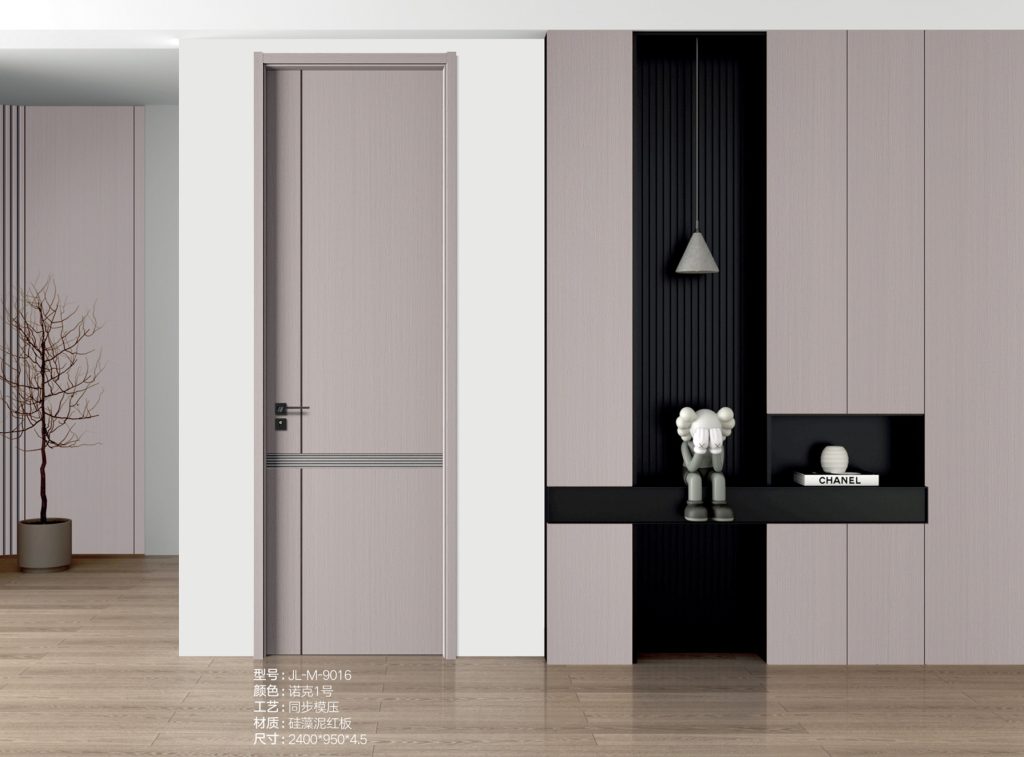
What are the characteristics of veneer doors?
Veneer doors are indeed a good design with good quality and low price. In its multi-layer bonding structure, there is a material called stable core, which is much cheaper than solid wood doors, but it provides good stability to the entire veneer door and reduces the warping and shrinkage of the veneer door.
The veneer layer has a natural wood grain texture, which ensures that the designer’s creative inspiration can be presented in your home. Moreover, these veneers have good resistance to scratches and dents, which is very beautiful visually and very durable in performance. Moreover, some veneer doors are highly fire-resistant, which allows us to improve the safety of our home without affecting the interior design style.
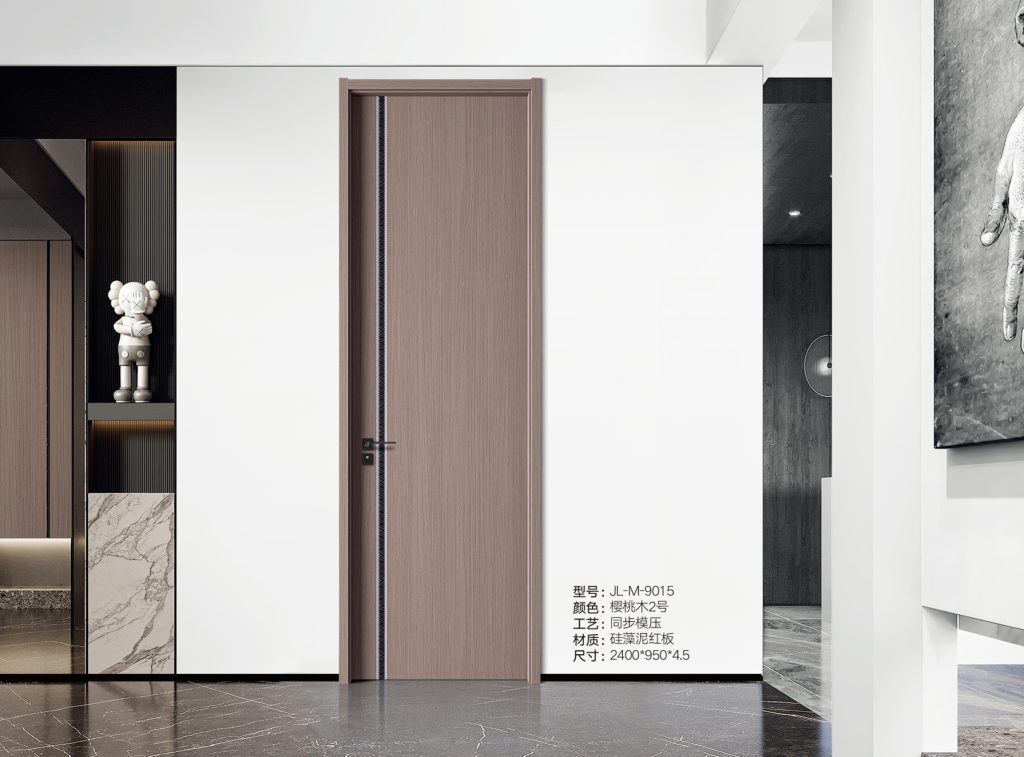
Main features of laminated doors
Laminated doors are one of the most popular doors because they are cheap and reliable. The main structure of laminated doors is generally made of engineering boards such as medium-density fiberboard and plywood. This material has high stability. In addition, in order to reduce the weight of the door, laminated doors are often filled with lightweight materials such as cardboard.
The surface of the laminated door has a very thin surface layer, sometimes this material is melamine paper. Melamine paper has an excellent appearance, comparable to real wood grain, and can have a real texture feel.
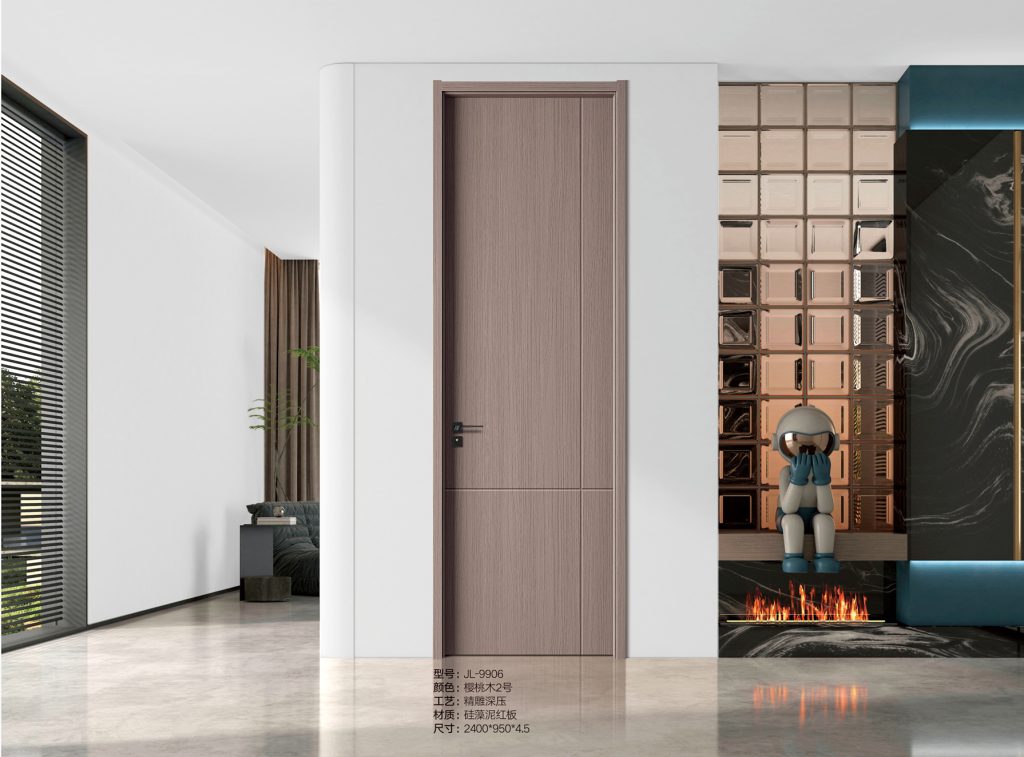
Performance of laminated doors in practical applications
Although laminated doors are widely used in many rooms and many scenes, whether laminated doors are suitable for your room requires the following points to be clarified. Given that laminated doors have excellent cost-effectiveness, long service life, and do not require much energy and time for later maintenance, you can choose one that suits your design style from a variety of laminated door styles.
However, if you can’t give up the thickness and feel of solid wood doors, or you expect a safer interior door that can withstand heavy blows, then laminated doors are not suitable for you. In addition, although the veneer layer of laminated doors can withstand certain scratches, such scratches cannot be repaired like solid wood doors.
In the final analysis, if you have high requirements for the safety of interior doors and require that interior doors must also be able to withstand heavy blows, then laminated doors are not suitable for you. But are you really sure that interior doors also need such strong structural strength?
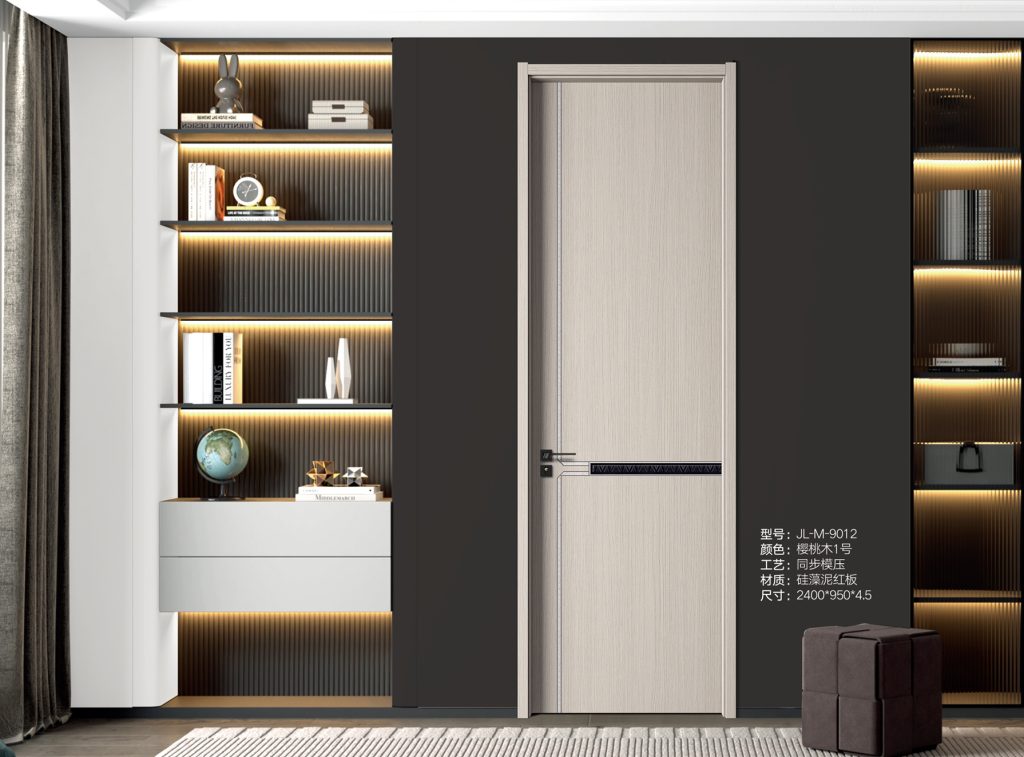
Comparison of laminated doors and veneer doors in terms of waterproofness and post-maintenance
Waterproof performance
Laminated doors have a certain degree of waterproofness, but they are not completely waterproof. The surface of laminated doors is moisture-proof and waterproof, but the thickness of this layer is very thin and cannot be damaged. You can install laminated doors in rooms with moderate humidity, such as kitchens and bathrooms with dry and wet separation.
The waterproof principle of veneer doors is similar to that of laminated doors, so veneer doors are not completely waterproof. Most of the wood in the world will deform or change in quality if soaked in water for a long time. In addition, the base of veneer doors is usually made of medium-density fiberboard, which will absorb or curl when exposed to water.
Maintenance
If veneer doors are properly sealed with varnish or other waterproof materials, the service life of veneer doors will be greatly improved, especially for veneer doors used in humid environments.
Usually, laminated doors are coated with factory plastic or other materials. This material has been considered waterproof and durable, so you do not need to apply varnish to laminated doors in the later stage. Moreover, if you use varnish on laminate doors improperly, the finish of the laminate doors can easily be melted by the varnish causing damage.
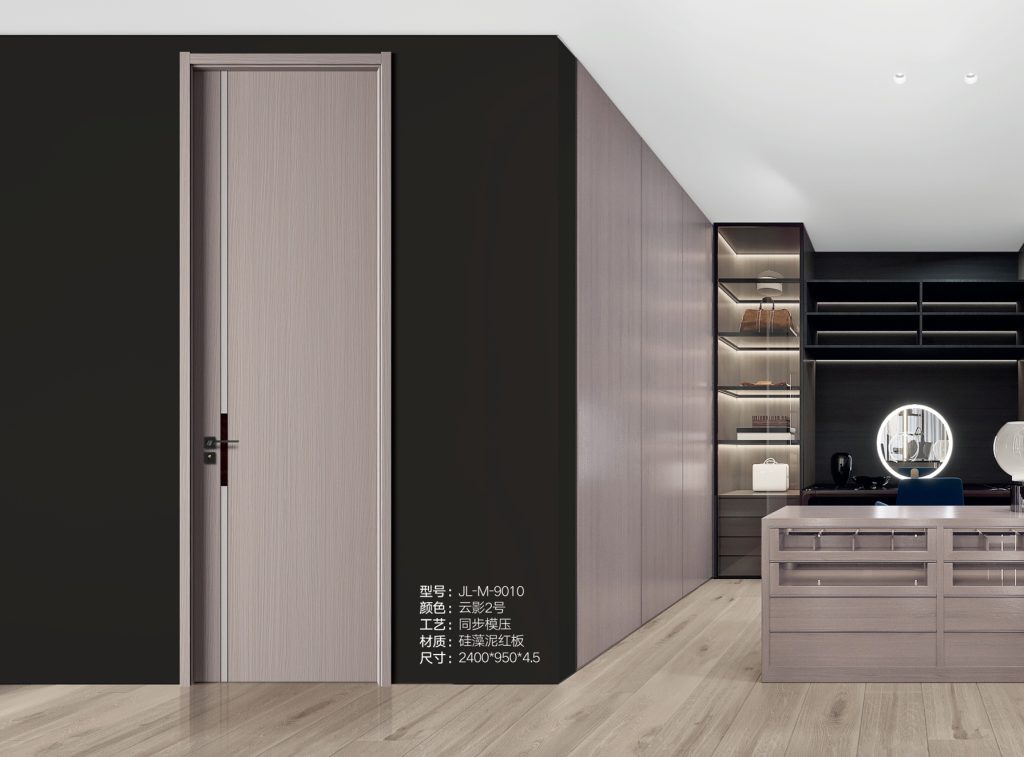
What are the significant advantages of laminated doors?
The structure of laminated doors is made of a variety of materials, which makes it much cheaper than wooden doors made of other materials, and this does not affect the rich and diverse appearance of laminated doors. Common ones include wood grain, solid color and cloth grain. Although the production technology is being upgraded and iterated, the feel of laminated boards is still different from that of solid wood in the hands of experts.
The surface of laminated doors has strong resistance to scratches, dents and moisture, and the surface is not easy to fade, just wipe it with a damp cloth. Therefore, laminated doors can also be installed in scenes with large traffic.
The sound insulation effect of laminated doors is related to the internal structure you choose. The materials used in the internal structure of laminated doors mainly include honeycomb paper, bridge hole structure board, mechanical structure silent board, graphene and other materials. The specific sound insulation performance is closely related to the filling material of the door panel. If you have requirements for the sound insulation effect of indoor doors, please pay attention to this.
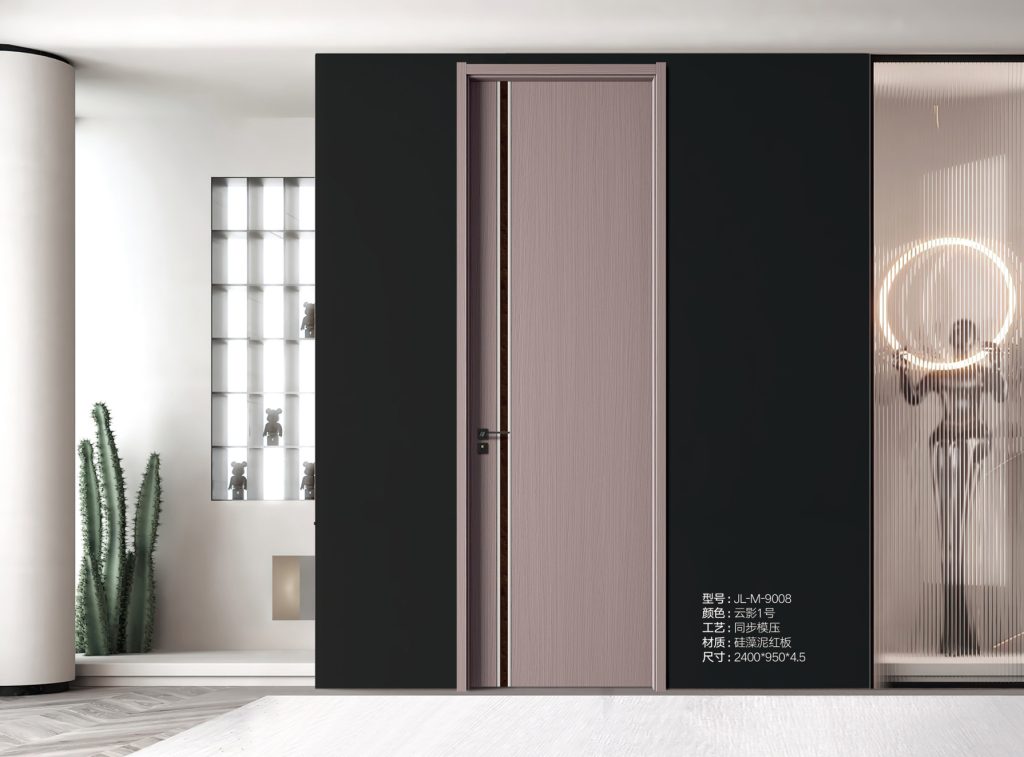
What is the Difference Between Laminate and Oak Veneer?
Remember, laminate and veneer doors offer distinct advantages. Laminate is a budget-friendly option with a durable, easy-to-clean surface that comes in various styles. It mimics wood grain but isn’t real wood.
Oak veneer, on the other hand, provides a genuine wood look and feel with the warmth of natural oak. While more expensive, veneer can be refinished for a refreshed look. However, it could be susceptible to scratches and dents compared to laminate and requires a well-ventilated bathroom to avoid moisture damage.
The choice hinges on your priorities: affordability and durability with laminate, or a nod to luxury design and potential refinishing with oak veneer.
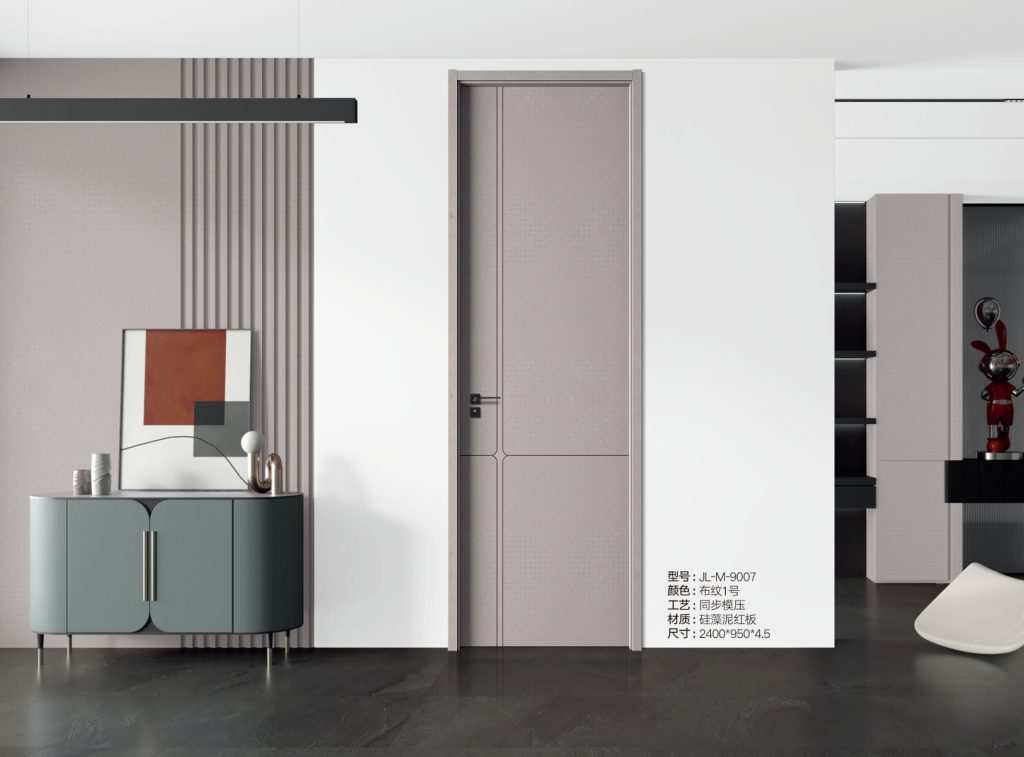
Choosing the Right Door for the Right Room
Go for laminate if you value affordability, durability and easy maintenance in high-traffic areas, bedrooms, and utility rooms. Opt for veneer doors for a luxurious look in living rooms, bedrooms and well-ventilated bathrooms, but avoid high-moisture areas (such as near kitchen sinks and showers) and heavy traffic spots.
Internal veneer doors
| Living rooms | Infuse a sense of quality craftsmanship with classic oak styles that evoke authenticity. |
| Bedrooms | veneer doors offer a more upscale feel than laminate for private spaces. |
| Dining areas | The natural warmth of oak complements dining furniture and creates a welcoming vibe. |
| Bathrooms | Only suitable for well ventilated bathrooms with proper sealing. veneer doors can handle moderate bathroom humidity, but direct shower spray should be avoided. |
Internal Laminate Doors
| High-traffic Zones | Entryways, hallways, laundry rooms, playrooms, ensuite bathrooms, study spaces and more. Laminate holds up well to everyday wear and tear. |
| Bedrooms and Guest Suites | Solid core versions offer decent privacy and come in various on trend neutral styles to complement décor and establish a calming environment. |
| Kitchens and Bathrooms | Their water resistance makes them suitable for occasional splashes, but direct water exposure should be avoided. Use with caution. |
| Closets and Pantries | Being budget-friendly, laminate doors are a good choice for less visible areas. Choose white for an airy feel or match with your walls for a hidden storage effect. |
Which is better, Laminate or Veneer Doors?
For hallways, entryways and children’s rooms, laminate’s durability and low maintenance make it a great choice. On the other hand, living rooms, dining rooms and studies can benefit from the elegance and warmth of veneer doors. Meanwhile, bathrooms and laundry rooms benefit from laminate’s resistance to moisture damage. And when all is said and done, laminate is the clear winner when cost is the primary factor.
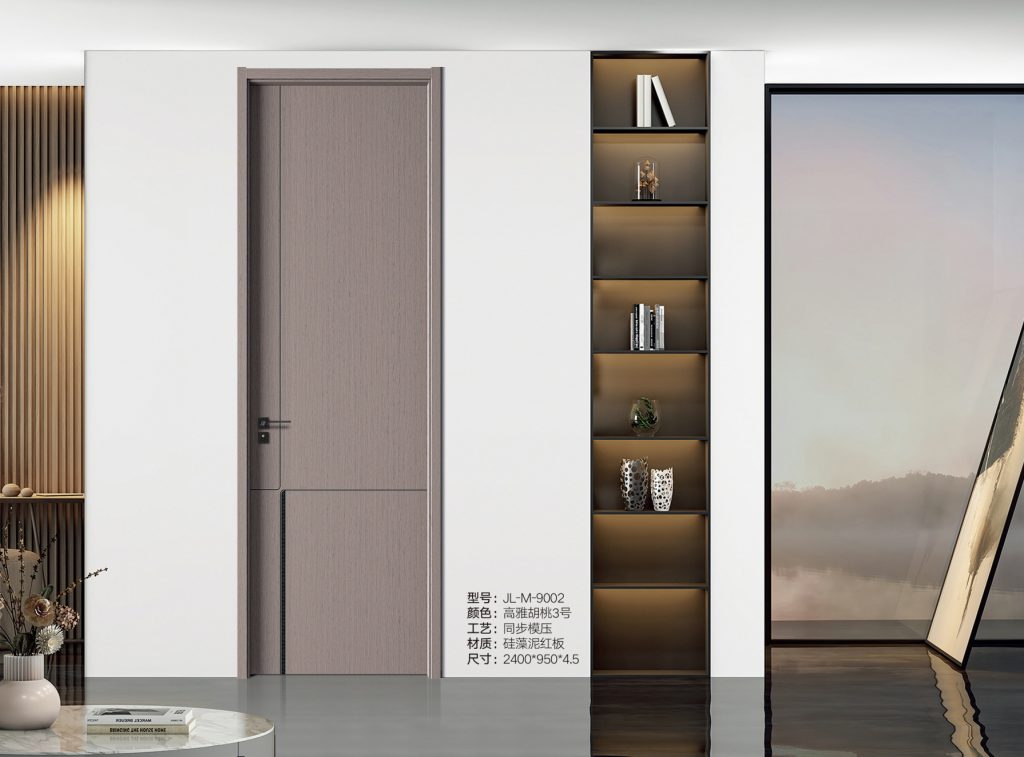
Ultimately, there’s no right or wrong answer. The best door material simply depends on your specific needs and preferences.
Reflect on the aesthetic you desire, the functionality of the room and your budget to make an informed decision. Both veneer doors and laminate doors offer unique advantages, and either can be a fantastic addition to your home.
You can get more suggestions on how to choose a door by clicking here!
 Opanpan Door Skins
Opanpan Door Skins